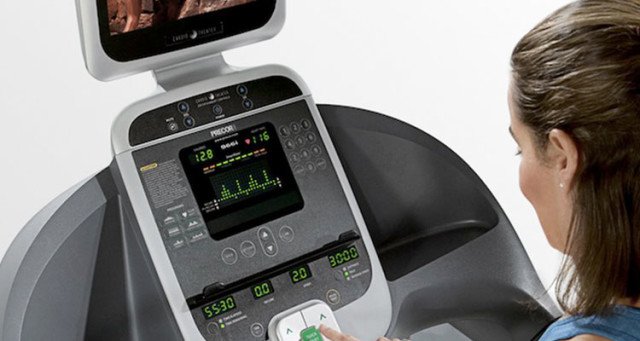Cardio is a term of English origin that is for cardiovascular fitness, a term that can be translated as cardiovascular fitness, cardio in common usage the term is used to indicate a particular type of training. As you know, from a medical point of view, the purposes of the training are to realize the adaptation of the human body to the athletic motion.
These purposes belong also to cardio, practice that involves the use of one or more simulators, tools with which they mimic, from functional point of view, specific gestures cyclic who have precisely the purpose of improving our respiratory and cardio circulatory parameters; those more tidings and used are the common cycle ergometer, the horizontal cycle ergometer, the ergometer indoor cycling, treadmill, step, rowing, cross-country skiing simulator, etc….
As you can see tools are very different, but when used for cardio, must all have a common characteristic: the presence of the heart-rate monitor. It can not be talking about cardio if there is the presence of this particular accessory, because, according to the canons of cardio training must take place within a specific range of heart rate, beyond which, exercise not only is useless, but even harmful, then the heart-rate monitor is the guardian angel who watches over our most important muscle, the heart, the heart-rate monitor, as it is more usually called, is ready to experience the athlete wearing it in the unfortunate event that this goes beyond the fateful threshold of danger for many is still represented by the result of the now antiquated formula HRmax = 220-age.
Such a view reveals a substantial ignorance of human physiology in general and that of training in particular. It is also an index approach ” scary ” to the sport, and it is well known. The fear is a bad counselor and prevents to maximize their potential.
This premise a little between the serious and the facetious might suggest that our position is net of closing the use of a heart-rate monitor. It is not so, and we invite you to read our article dedicated to it (the heart rate) to be convinced of the contrary, it literally say that the pulse (or heart-rate monitor) can be used with some success.
We are not ” against ” cardio. We are rather very critical of the misuse that is made of this tool. Refer to the article mentioned above to understand for what purposes you would use it, here we limit ourselves to reiterate once again that cardio cannot and should not be used to protect the heart and weight loss.
Let us remember that the professionals do not use it and adjust workouts based solely on the parameter of heart rate prevents optimization of training preparing themselves in the long run, the low-intensity training.
Accident prevention heart disease.
In gym’s cardio, heart-rate monitor is also used to soothe the segment of the public, particularly hypochondriac who fears for the health of their heart in relation to excessive physical strain. I happened more than once to hear the personal trainer say to a lady who had just entered that ” the use of cardio is very useful not to overdo it and do not have problems with your heart. ”
This appears generous attention to the customer seems to me a devastating boomerang, as well as a gross inaccuracy in terms of cardiac physiology.
Psychologically, rather than reassure a hypochondriac, is the best way to justify his fears that surely will send those who are near (from children to friends, to the casual acquaintance) with the message: sport can hurt the heart and is not well exaggerated.
The spirit of this article is to take preventive action at the gym does not simplistically promoting the use of heart rate, but also by promoting visits of competency and periodic checks that, from the point of view of the operator should be seen not as a nuisance, but as an additional source of business.
How the heart works.
Let’s see how a healthy heart. During physical exertion to the heart muscles require more oxygen to reach, according to this request, the cardiovascular system is activated and carries oxygen to the muscles. Increase the consumption of oxygen, and if the effort is low, energy is used to produce virtually the only aerobically, increasing effort is also significantly used the anaerobic pathway. An important consideration highlighted by Noakes (1998) and Peltonen (2001) is the absence of phenomena angina (chest pain) in healthy athletes even in conditions of maximum stress at a high altitude.
Whereas the contractile activity of the heart is damaged by a lack of oxygen (ie, the heart does not know to twitch anaerobically) it is evident that there must be a control mechanism that, due to the increase of lactate perceived by the heart, triggers a signal block to the brain which in turn blocks the recruitment of muscle fibers delegated the exercise: the subject is in crisis, and the heart is safe.
To conclude, a healthy heart has natural control mechanisms that block the effort before it can damage the heart. It is crucial that in the population pass the message that sport can only do harm to a bad heart, and that sport cannot ” cause ” heart attack. It is also essential to the practice of a medical examination which is not a mere formality and that goes beyond what is required by law for the practice of amateur sports, for example, by including also blood tests that can highlight a risk index high cardiovascular.











